Review by Pete Vack
It is impossible to imagine a more exciting, creative, supercharged automotive adventure than the second coming of Bugatti. Initiated by a young author, Jean-Marc Borel, he was aided and abetted by Ferruccio Lamborghini, engineer Paolo Stanzani, designer Marcello Gandini, and soon, money man Romano Artioli. In a remarkably short amount of time, the team conceived, designed, and constructed the Bugatti EB110, as well as an entirely new factory out of nothing but the rights to the Bugatti name. It was brilliant, it was glorious, it had everything that one could have hoped for, except success.
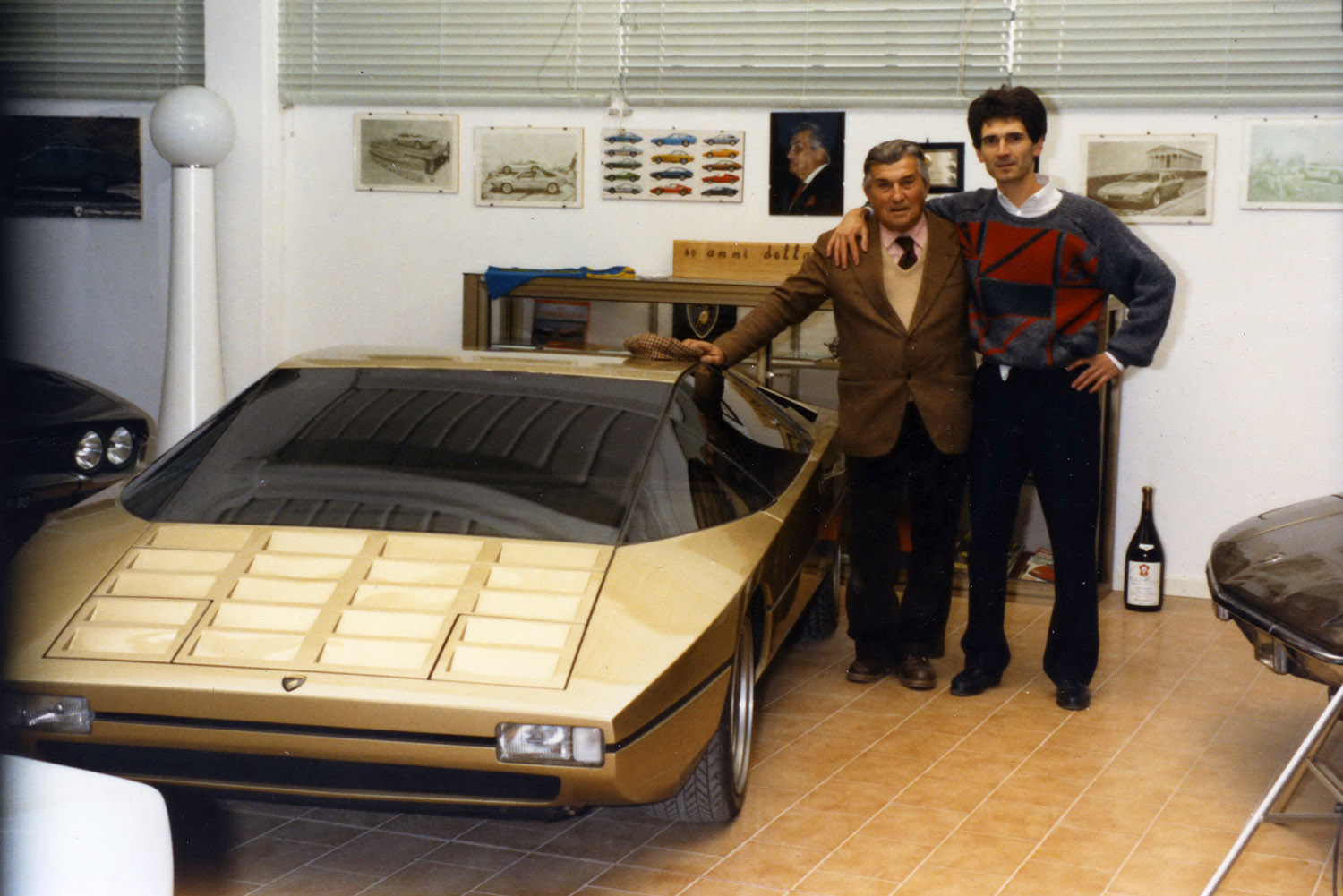
During the research for his book Lamborghini Jean-Marc Borel became friends with Ferruccio Lamborghini. Their discussions about high performance cars led to the idea of a new Bugatti.
No one is more qualified to write the story of Bugatti’s Italian Decade than the irrepressible, prolific and truly enjoyable Gautam Sen. There are, and will be other books on the subject of the Bugatti EB110 but Sen writes from an unbiased perspective, and includes the voices of many who worked for the company, in addition to the famous engineers and artists. He lays out the scenario from different points of view, making use of his longtime friends and contacts in the Italian automotive community. Sen confirms that all of the participants were enthusiasts first, wanting to re-create a legend and not just wealth. They eventually failed, but their deeds are now legend, thanks to Sen.
Sen also received the total cooperation of Jean-Marc Borel, the man who conceived the project in the mid 1980s and stuck with it until VW’s Ferdinand Piëch signed the agreement to purchase the Bugatti trademark rights from the holding companies headed by Romano Artioli in 1998.
Enthusiasm, ego, and visions
Who would have thought that the retired Ferruccio Lamborghini was an inspirational force behind the EB110? Lamborghini refused to build a new supercar, but without his experience, encouragement and contacts, the project would probably have never gotten off the ground. Most significantly, Lamborghini brought in Paolo Stanzani and Marcello Gandini (both of Countach fame and much more) to discuss the possibilities of creating an entirely new car. In turn, Stanzani found a potential financier in Romano Artioli and the project was underway.
A quick look at critical dates associated with the EB110 (it got its moniker as it would be introduced exactly 110 years after the birth of Ettore Bugatti):
1987 May 10, the Bugatti name and brand was purchased by Romano Artioli
1987 October 14, Bugatti Automobilia Spa incorporated in Modena
1990 July 12, Paolo Stanzani fired
1990 Sept 15, factory inaugurated with covered prototype
1991 July 16, Marcello Gandini quits
1991 September 14, EB110 Grand unveiling in Paris
1993 Geneva show, EB112 introduced
1995 September 23, Court ordered factory to be closed
1998 VW/Audi purchases Bugatti name brand
They did what?
Wait. The prime mover, chief engineer, designer, head of Bugatti, and responsible for some of the most famous Lamborghinis ever built, the man, Paolo Stanzani, fired?
Wait. One of the most influential, talented, respected Italian car designers, Marcello Gandini, leaves Bugatti, and refuses to allow the company to associate his name with the EB110?
Wait. Only four years later, after all this investment, enthusiasm, money and talent, workers arrived at work to find the gates of the Bugatti factory padlocked?
What created the car was perhaps what contributed to its downfall. The same ego and visions that were responsible for the rebirth led to major disruptions in the company at a truly inopportune time. Suddenly Stanzani was summarily fired and the firm lost its anchor, chief engineer and leader while the market took a nosedive. Artioli decided to make a successful bid to buy Lotus, adding to the assets but using cash that could or should have been earmarked for the development and production of the EB110.
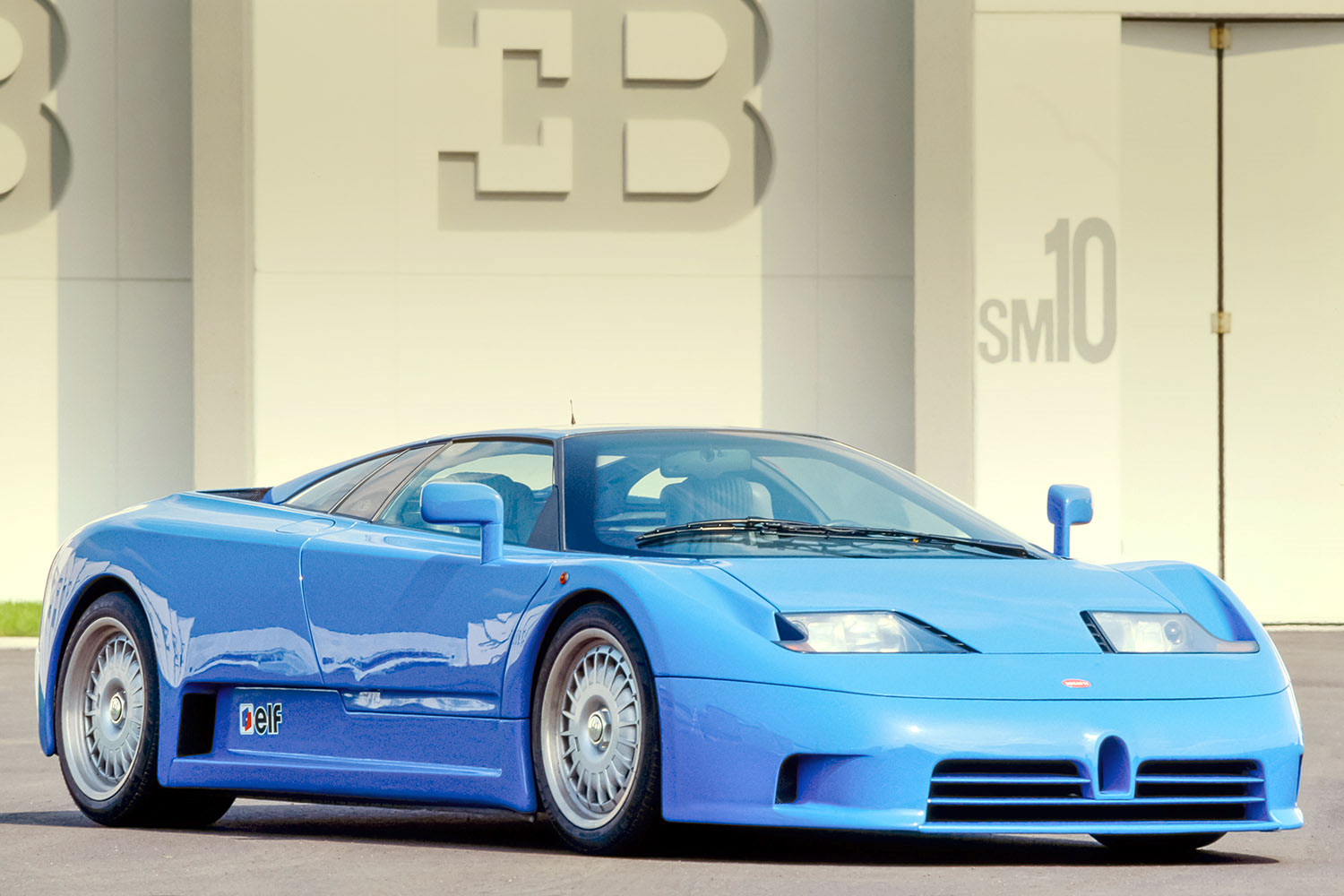
Needing a Bugatti type ‘grille’ Artioli’s new team modified the design, causing Gandini to refuse to allow his name to be associated with the EB110.
Then it was Gandini’s turn; Artioli wanted a Bugatti grille, and thought the prototype too Lamborghini-like. Gandini offered more designs, but eventually he decided that enough modifications had been made to his initial design and he would no longer allow his name to be affixed to the EB110. The final cut was a compromise, and lacked the grace of the Gandini prototypes. The end product was a brilliant but flawed supercar, one called ‘pug-ugly’ by some. How many were produced is uncertain, and there are no serial number listings, histories, or sales information.
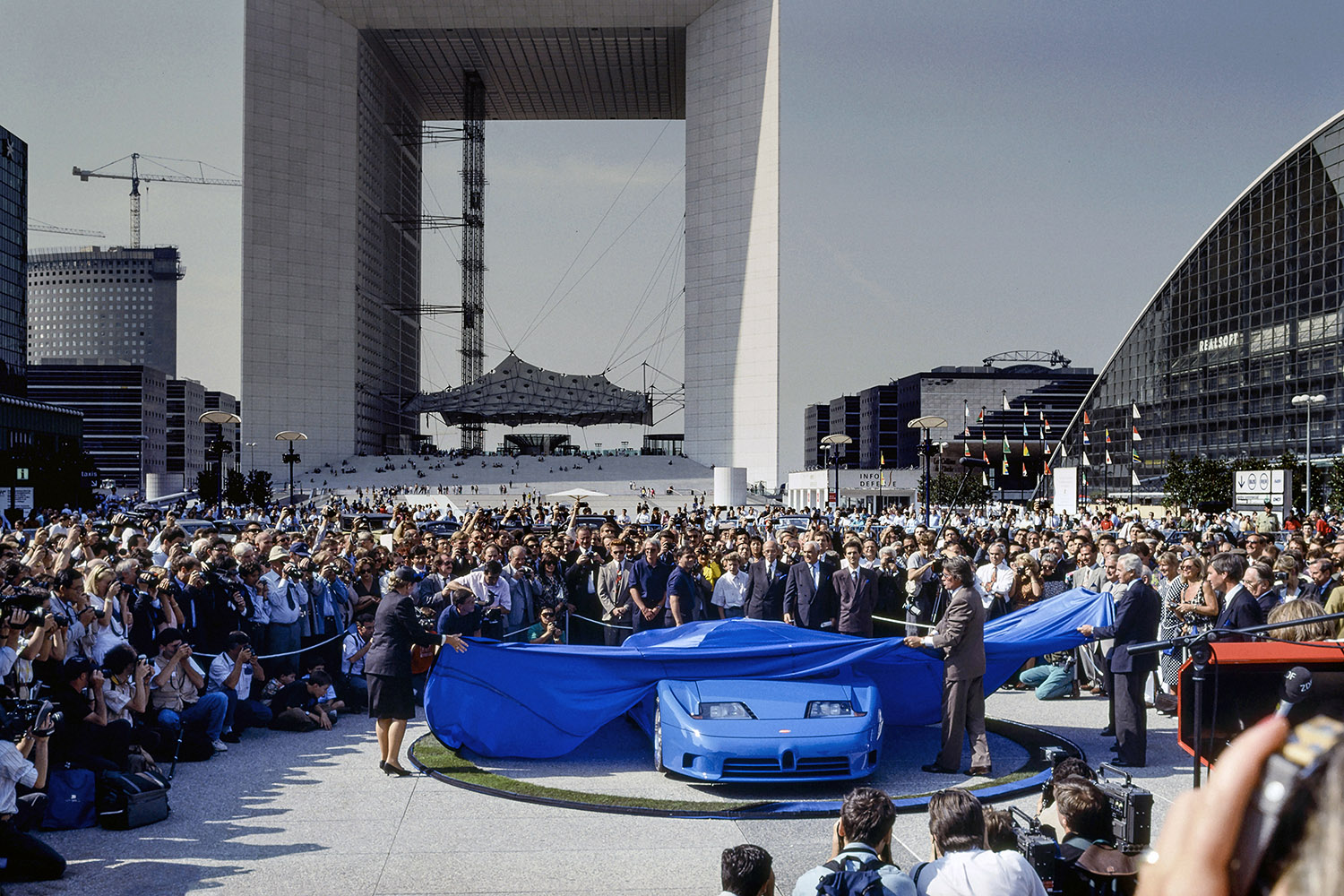
Seems like all of Paris including Alain Delon turned up for the unveiling of the production EB110 on September 14, 1991.
Getting the whole picture
Gautam Sen includes many chapters that provide the context; the history of the Bugatti family; backgrounds of both the engineers and designers who had input to the EB 110; explained is the brilliant engineering team that constituted TecnoStile, and their responsibilities. The reason for the purchase of Lotus is examined and Sen explains how the introduction of the Porsche 959 and the Ferrari F40 influenced the decision to design a five-valve V12 with four wheel drive. The problems associated with purchasing a trademark brand were revealed when the new owners had to make a deal with the French producer of T 57 retrocars, De La Chapelle, who had permission to put the Bugatti name and badge on a number of their own products. Sen discourses on the development of the hyper car, as well as the several cars that were born from the parts and ashes of the failed EB110 project. Short chapters cover the several EB110s that were raced, one at Le Mans and another at IMSA events.
Finally one great ray of hope, that while promising, also served to doom the company. Instead of investing in the development and production of the EB110, Artioli went down another path and introduced the EB112, a four-door, four-wheel drive, front-engined Bugatti that cost a fortune to design and develop. It was introduced at Geneva in 1993 but was never in production.

The state of the art factory was a showpiece. Today, it lies empty, abandoned and almost forgotten a few miles outside of Modena.
Today there stands a factory in Modena, empty and ghostly, almost harkening back to the fabled Molsheim factory. The once-busy lunch area still has art hanging from the ceiling and one of the famous Bugatti doors first mentioned by Ken Purdy in Kings of the Road. It is in the hands of a realtor now.
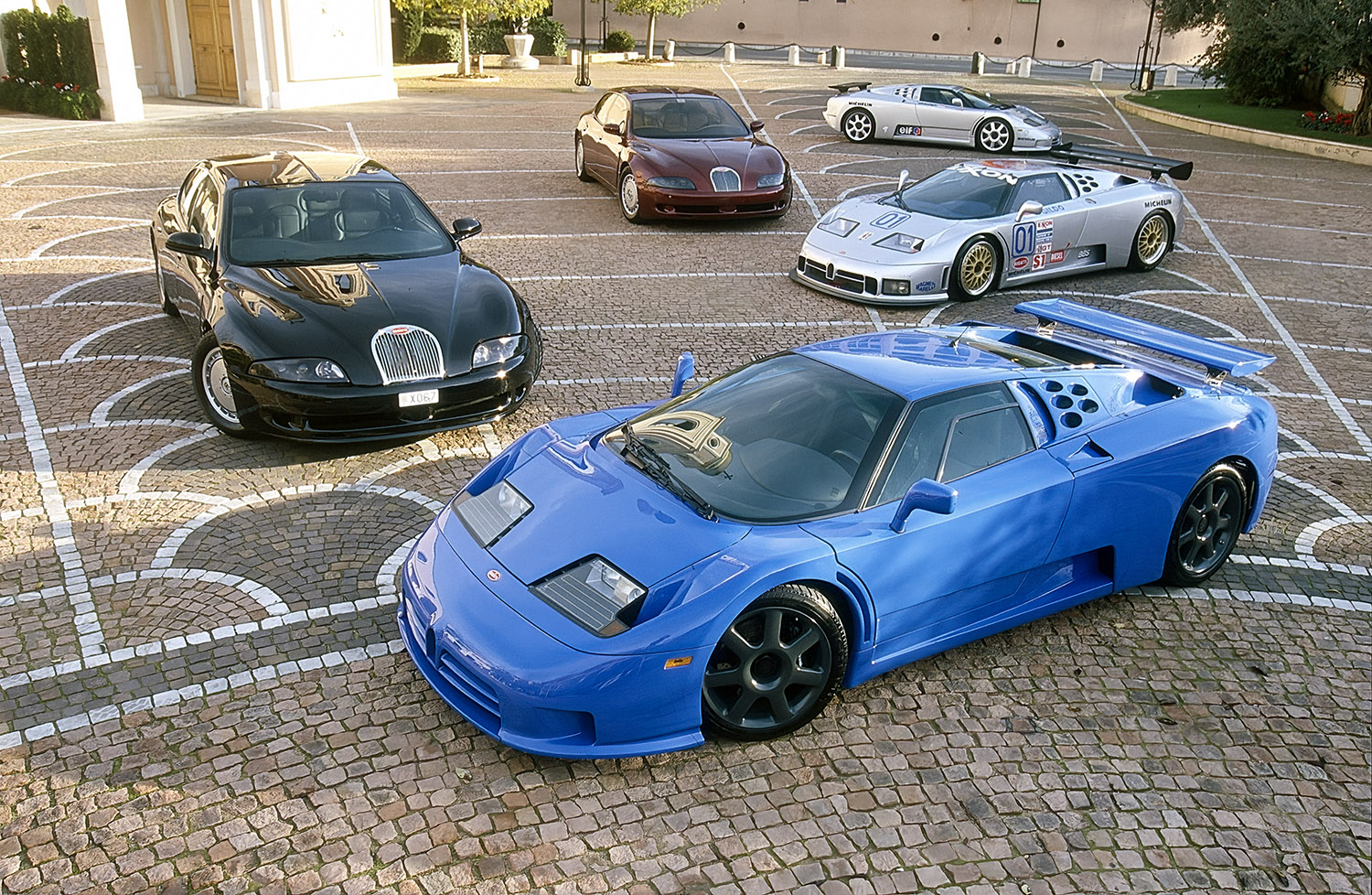
In 1994 Monaco-based billionaire Gildo Pallanca Pastor decided to go racing with the EB110 and poured copious amounts of money into the effort. But Bugatti went under, and after the bankruptcy Pastor was left with these cars. The prototype EB112 is in deep red, the IMSA race car is silver, and the blue car is a EB110 SS, last of the line.
Drawings of the early EB110
Bugatti, The Italian Decade
400 pages
Hard cover with dust jacket
219mm x 304mm (portrait format)
790 images
Author: Gautam Sen
$150
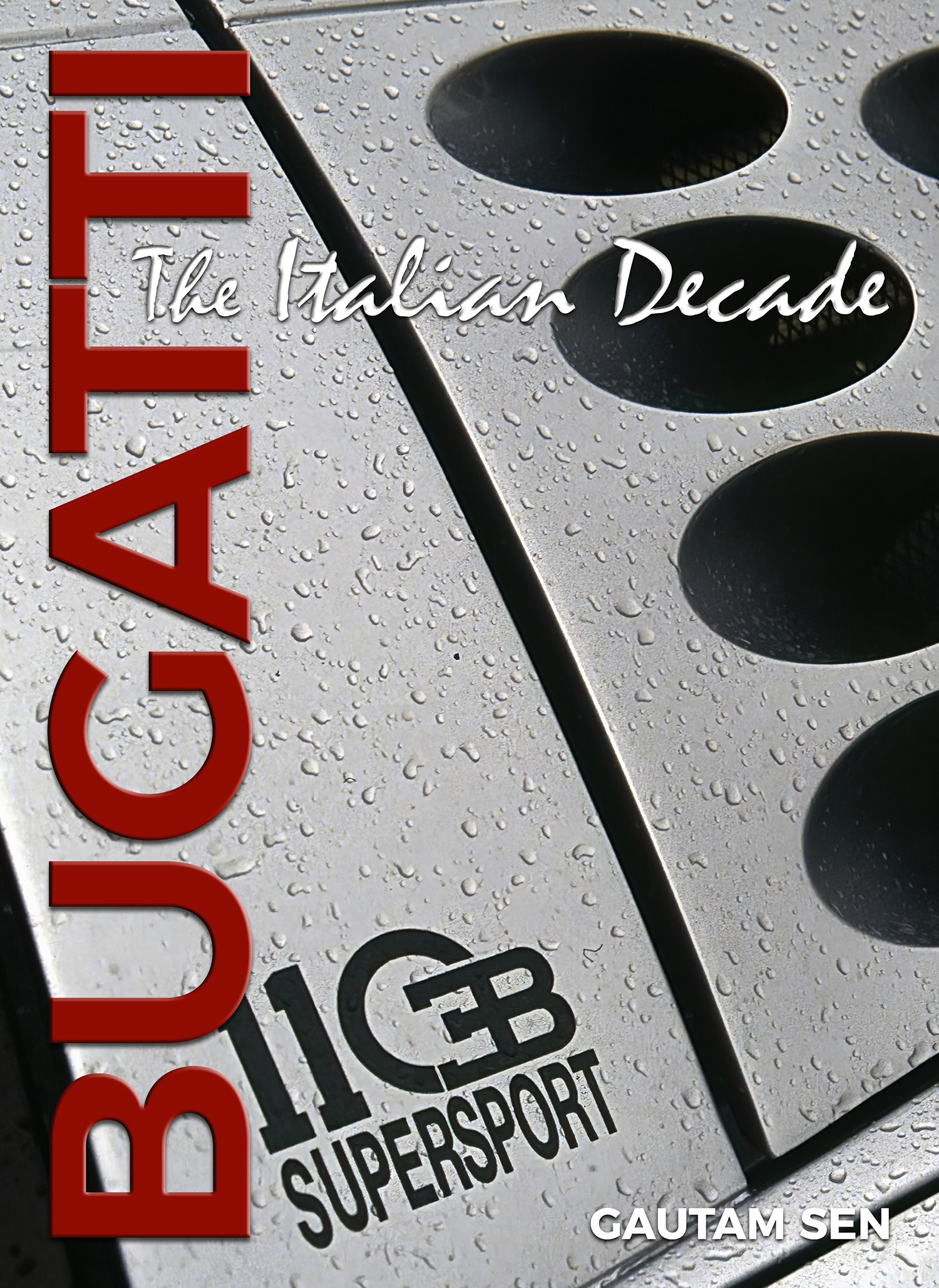
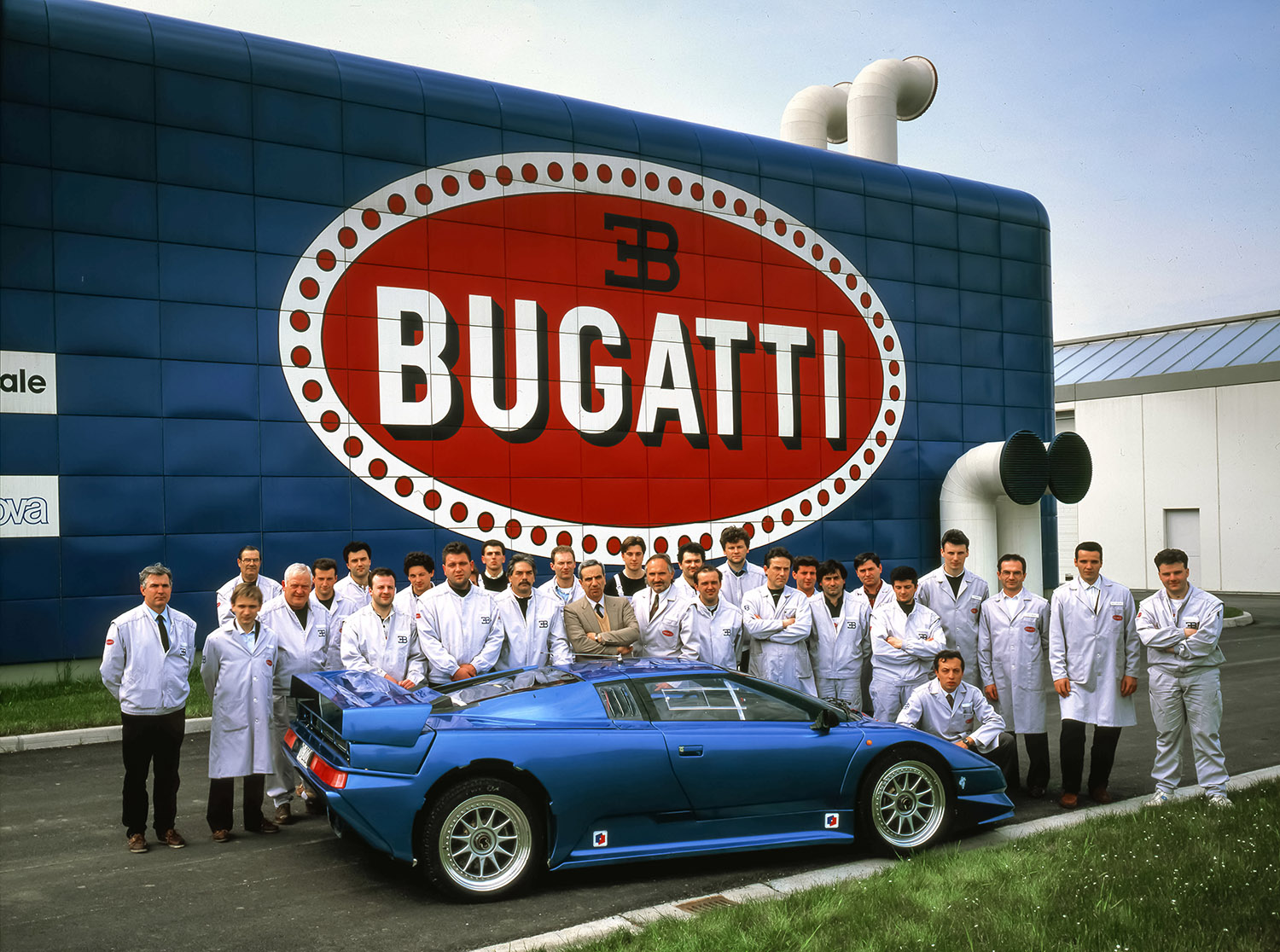
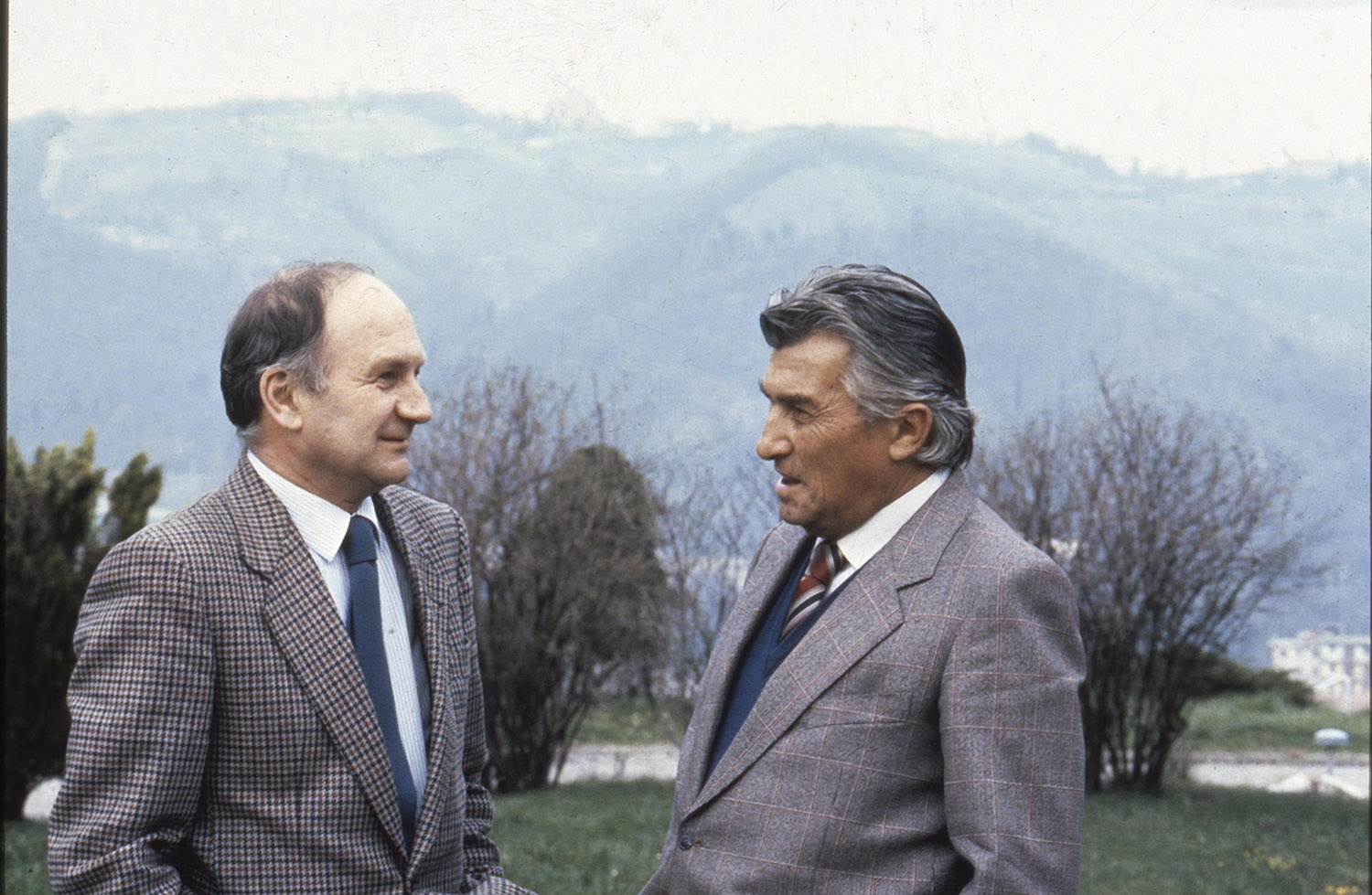
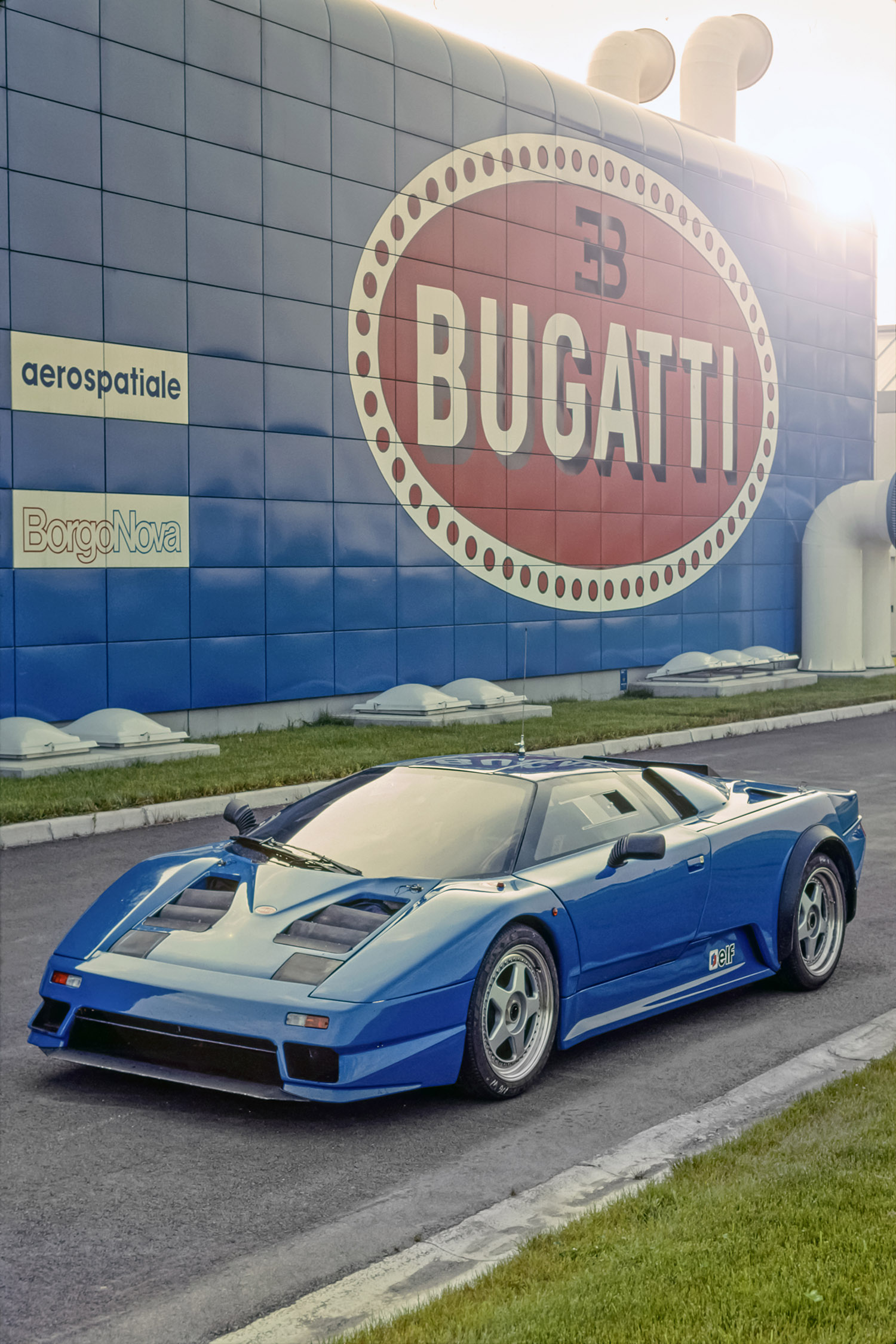
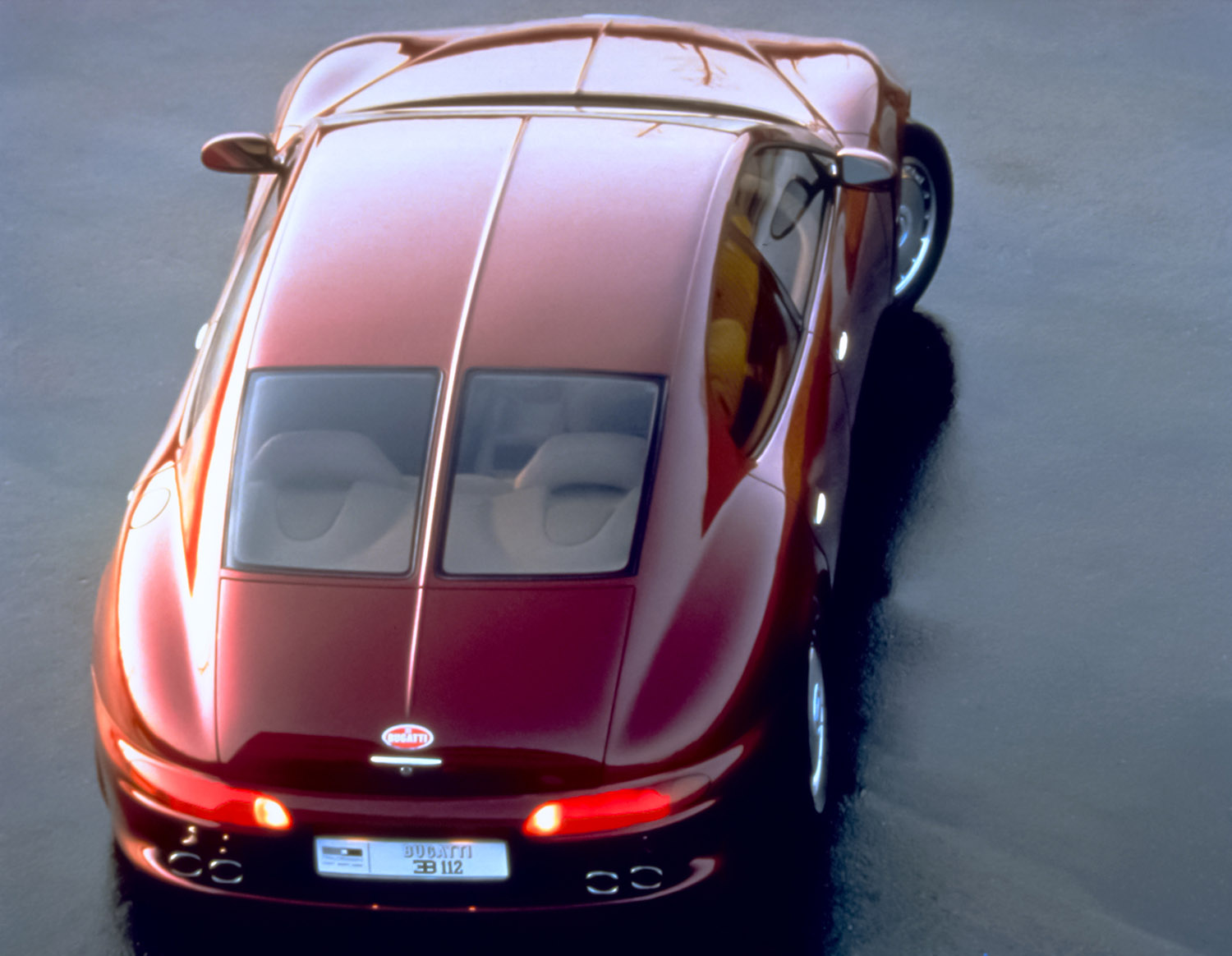

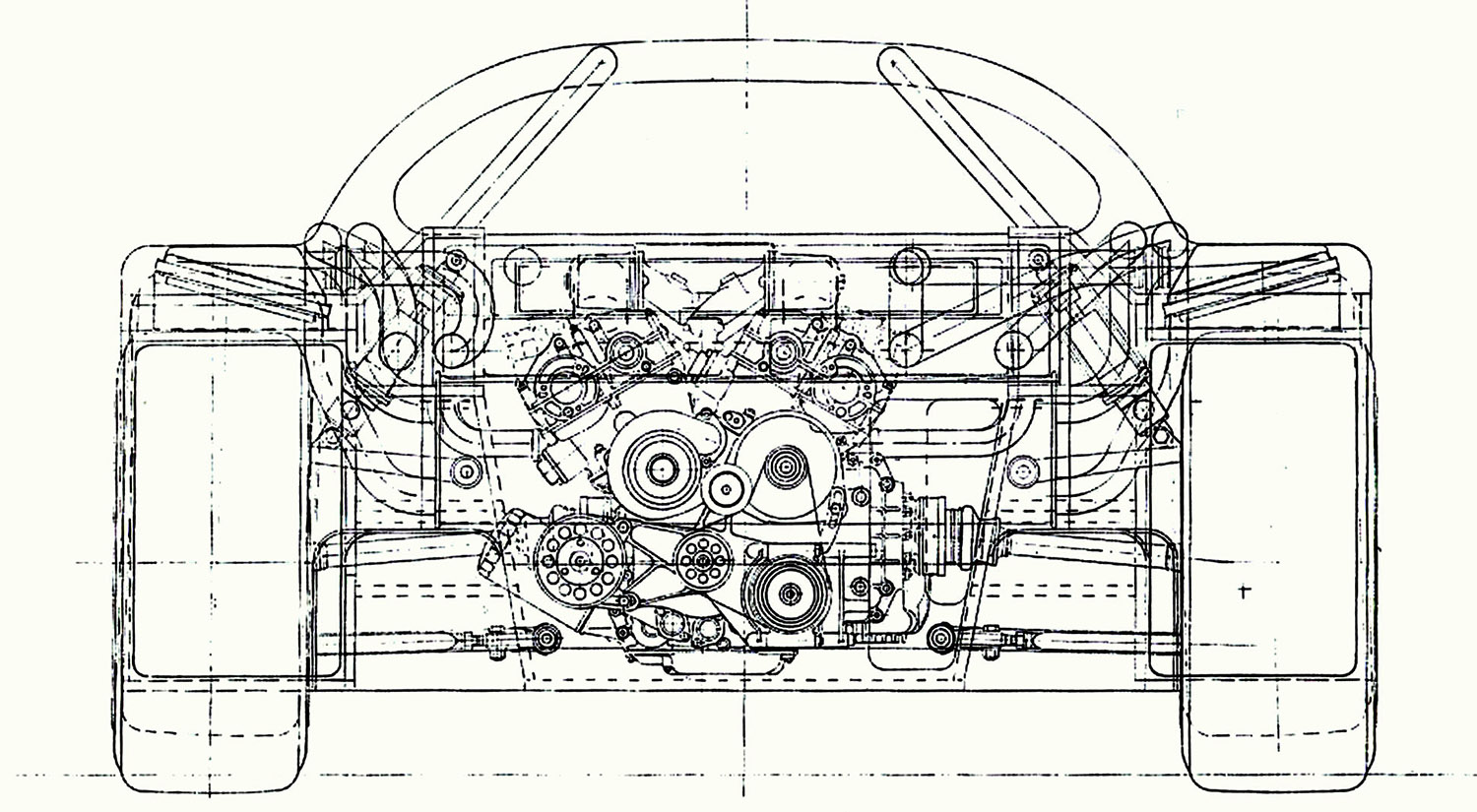
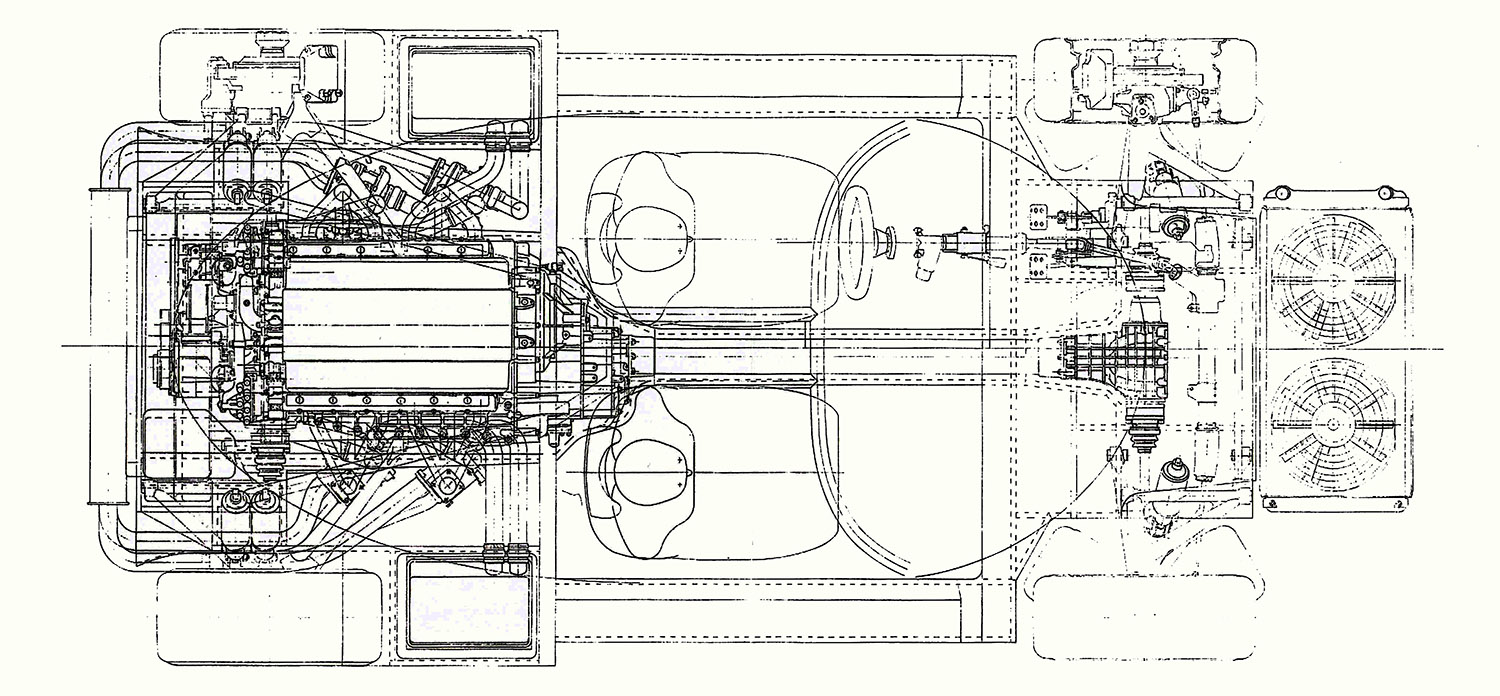
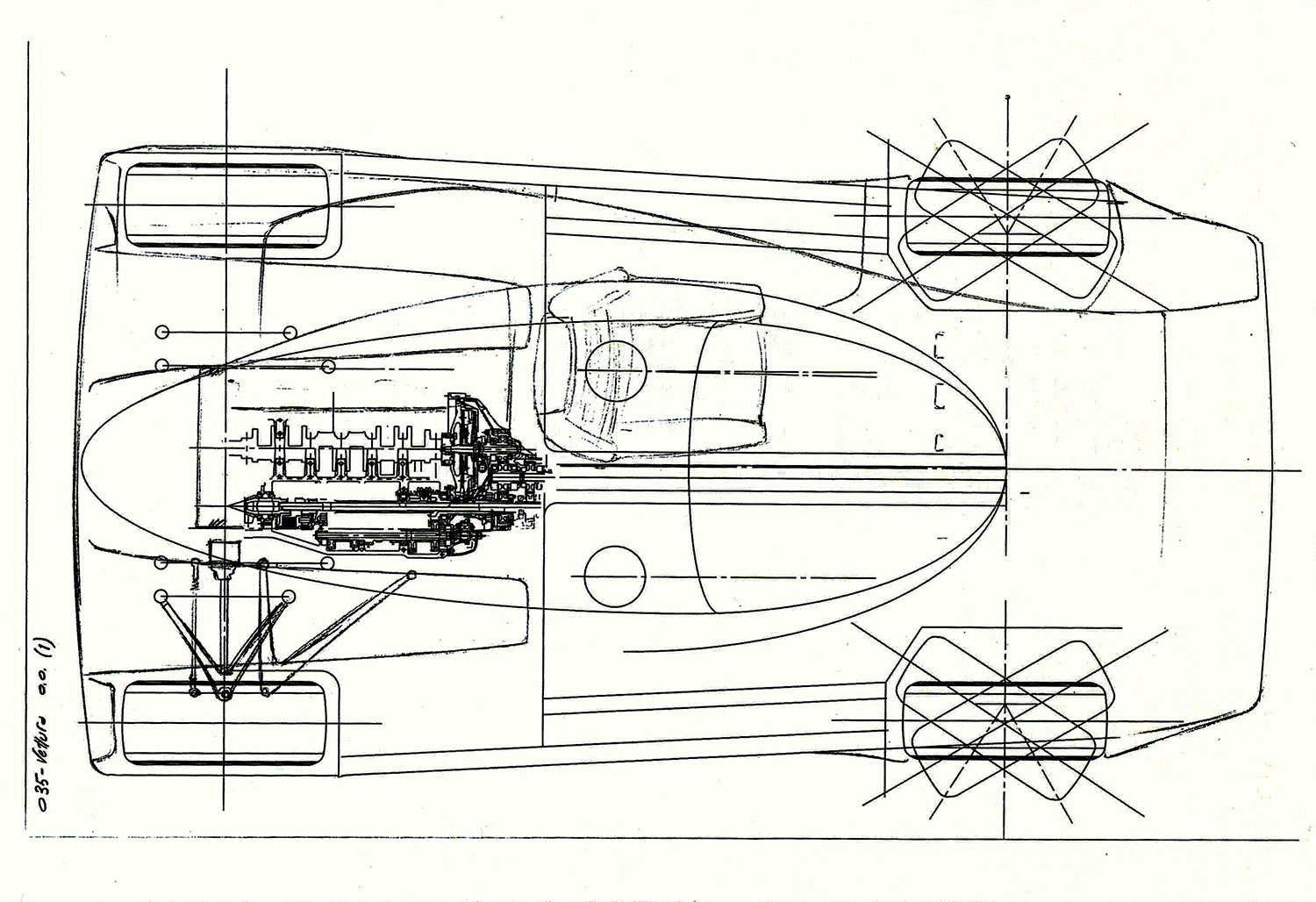

In Italia di questi giochetti di grandi e piccole opere, ne abbiamo visti a bizeffe.
Sanno già, prima di cominciare che sono destinati all’oblio.
In Italy we have seen plenty of these games of large and small works.
They already know before they begin that they are doomed to oblivion.